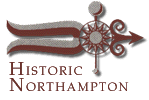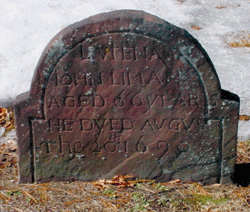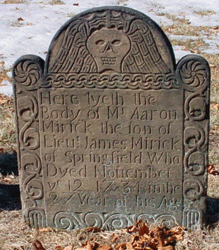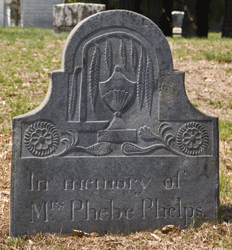
Bridge Street Cemetery Northampton Architecture Historic Markers 
|


Gravestone Art
 |
| This 1690 headstone is among the oldest in the Bridge Street Cemetery. |
 |
| For Puritans, the death’s head on tombstones came to represent the transitory nature of earthly life. |
It was not until the 1720’s that images such as the winged death’s head began to appear in Bridge Street. An example of this style would be Aaron Mirick’s gravestone from 1734. The death’s head symbolized the certainty and triumph of death, as well as God’s judgment of sin.
 |
| Symbolizing mourning, the willow and urn adorn this 1790 slate gravestone. |
At the beginning of the 19th century, marble became a popular material because of its neoclassical associations. Neoclassical designs such as the urn, the willow tree and columns became popular motifs. By the 1820's design had become increasingly stylized and standardized. Mass produced headstones increasingly replaced the craftsmanship and art of the stonecutter. The graveyard itself became standardized as it was divided into identical plots and grids. By the 20th century, markers and headstones resembled those in cemeteries all over America.
Contents Historic Northampton.